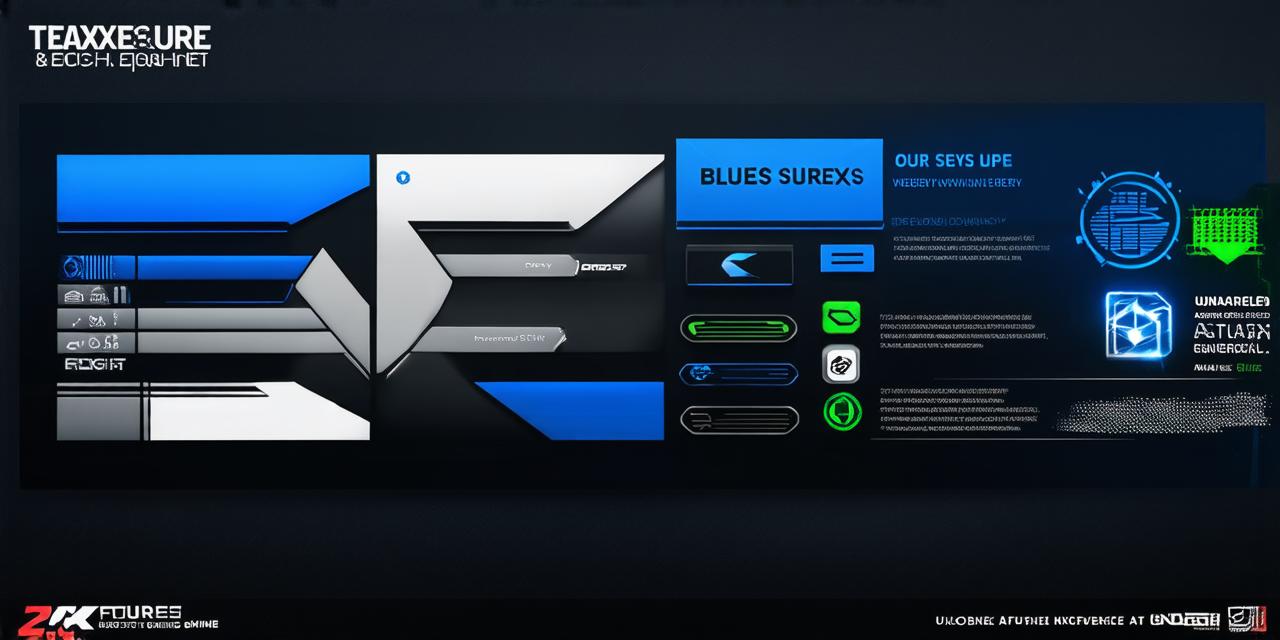Introduction
In today’s world of gaming, visual fidelity and immersive experiences are key to capturing the attention of players. Unreal Engine 4 (UE4) is one of the most popular game engines in use today, thanks to its ability to produce stunning graphics and engaging gameplay.
Key Features of Unreal Engine 4
-
Realistic Graphics: UE4 is renowned for its ability to generate high-quality graphics, thanks in part to its advanced physics simulation and lighting systems. These features enable developers to create lifelike characters, environments, and effects that can captivate audiences. The engine includes a variety of tools for creating textures, materials, and lighting effects, as well as support for real-time ray tracing, which can greatly enhance the visual quality of a game.
-
Dynamic Lighting: UE4’s dynamic lighting system allows developers to create complex lighting scenes that change based on the player’s actions or the time of day. This feature adds depth and complexity to the game world, making it more immersive and engaging. The engine includes a variety of tools for creating dynamic lighting effects, including real-time shadows and reflections, which can greatly enhance the visual quality of a game.
-
Physics Simulation:
UE4 includes a robust physics simulation engine that enables developers to create realistic interactions between objects in the game world. This feature allows for more believable character movements, environmental interactions, and other effects that can enhance the overall experience. The engine includes a variety of tools for creating physics simulations, including support for rigidbody dynamics, cloth simulations, and fluid simulations.
-
Procedural Generation:
UE4’s procedural generation system allows developers to generate large, complex environments on the fly, without having to manually create each individual object or element. This feature saves time and resources, allowing for faster development cycles and larger game worlds. The engine includes a variety of tools for creating procedural content, including terrain generation, building placement, and AI pathfinding.
-
Blueprints:
UE4 includes a visual scripting tool called Blueprints, which enables developers to create game logic and interactions using a drag-and-drop interface. Blueprints make it easier for developers to work with the engine, even if they don’t have programming experience. The tool allows developers to create complex gameplay mechanics and interactions without having to write code, making it an excellent choice for beginner developers or those working on smaller projects.
-
Virtual Reality Support:
UE4 supports virtual reality (VR) development, allowing developers to create immersive VR experiences that can transport players into new and exciting worlds. The engine includes a variety of tools for creating VR content, including support for room-scale environments, hand tracking, and eye tracking.
Real-Life Examples of Unreal Engine 4 Projects
1. Fortnite:
Fortnite is an incredibly popular battle royale game that was developed using UE4. The game features stunning graphics, dynamic lighting effects, and complex physics simulations, which all contribute to its engaging gameplay.
2. Samaritan Demo:
The Samaritan demo is a showcase of what UE4 can achieve in terms of visual fidelity and interactive storytelling. The demo features high-quality graphics, dynamic lighting effects, and interactive elements that allow players to explore the world and make choices that affect the outcome of the story.
3. AAA Games:
UE4 is used by many major game studios to develop their games. Some examples include Uncharted 4, God of War, and Red Dead Redemption 2, all of which feature stunning graphics, complex gameplay mechanics, and dynamic environments.
Advantages and Disadvantages of Using UE4 for Game Development
Advantages:
-
High-quality graphics: UE4’s advanced physics simulation and lighting systems can generate stunning visual effects that are difficult to achieve with other engines.
-
Dynamic lighting: The dynamic lighting system allows developers to create complex lighting scenes that change based on the player’s actions or the time of day, adding depth and complexity to the game world.
-
Procedural Generation:
UE4’s procedural generation system can save time and resources by automatically generating large, complex environments without having to manually create each individual object or element.
-
Blueprints:
The Blueprints tool makes it easier for developers to work with the engine, even if they don’t have programming experience, and allows them to create complex gameplay mechanics and interactions without having to write code.
-
Virtual Reality Support:
UE4 supports virtual reality development, allowing developers to create immersive VR experiences that can transport players into new and exciting worlds.
Disadvantages:
-
Performance requirements: UE4 requires high-performance hardware to run smoothly, which can limit its accessibility to some users. Additionally, creating games with UE4 can be resource-intensive, requiring a significant amount of computing power and memory.
-
Cost: UE4 is not free, and developers must purchase a license in order to use it for commercial projects. The cost of the license can vary depending on the size of the team and the scope of the project.
-
Learning curve: UE4 can be challenging to learn, especially for beginners who may need to spend more time learning how to use it effectively.
Conclusion
Unreal Engine 4 is a powerful game engine that is capable of generating high-quality graphics, complex physics simulations, and dynamic lighting effects. The engine’s procedural generation system, Blueprints tool, and VR support make it an excellent choice for game development, while its advanced physics simulation and lighting systems allow for the creation of immersive and engaging environments. However, UE4 can be resource-intensive and require high-performance hardware to run smoothly, and its cost can vary depending on the size of the team and the scope of the project.
